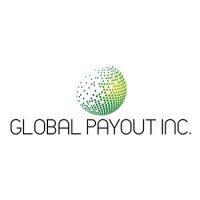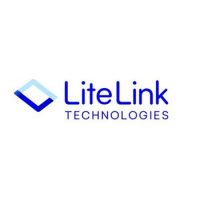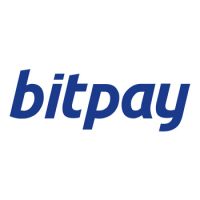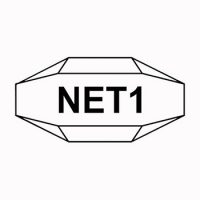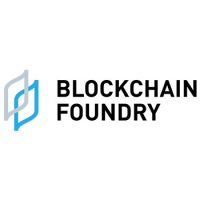Blockchain
WSGF Announces Cryptocurrency To Back Short-Term Rental Vacation Properties Available On Vaycaychella Alt Finance App
Dallas, Texas–(Newsfile Corp. – May 13, 2021) – World Series of Golf, Inc. (OTC Pink: WSGF) (“WSGF”) today announced its Caribbean Short-Term Rental Vacation Property Partner backed by WSGF’s alternative finance subsidiary, Vaycaychella, plans to introduce a cryptocurrency where buyers will able to participate in new vacation property acquisitions.
Vaycaychella has invested in a portfolio of beach properties operated as short-term vacation rentals by a partner that offers the vacation properties on sites to include Airbnb, VRBO and Booking.com.
Vaycaychella, prior to being acquired by WSGF, built a pilot alternative finance business for short-term rental vacation properties backing the portfolio of beach rentals in the Caribbean. Vaycaychella built a portfolio valued at $1.2 million.
Vaycaychella’s pilot was weighted with a social responsibility intent. The majority of properties are located in Cuba and empower local entrepreneurs and create jobs.
Vaycaychella founders are excited about what their alternative finance services can do for empowering entrepreneurs in developing economies around the world, at the same time empowering entrepreneurs everywhere.
Vaycaychella has continued to expand its portfolio since coming under WSGF notably adding a Boutique Hotel in Havana, Cuba expected to be opening soon.
Later this month, Vaycaycehlla will launch its Vaycaychella App.
In response to the sharing economy advances empowered by applications such as Airbnb and VRBO, that enable every property owner virtually anywhere in the world to generate income from renting a spare room to an entire vacation property, WSGF’s has endeavored to help more people become property owners by making real estate purchase finance more accessible through a Peer to Peer (P2P), Fintech, Alternative Short-Term Rental Purchase Finance Application (App).
Vaycaychella has built an application that enables entrepreneurs seeking investment to post their target property purchases and/or property renovation projects for consideration by private investors. In addition to posting their project, the Vaycaychella app enables entrepreneurs to post their own personal profiles so investors can consider both the experience and character of the entrepreneur in addition to the fundamentals of the property or renovation project.
After a successful beta test of the Vaycaychella App, WSGF is skipping a second phase of the beta test and going straight to a production launch. The feedback from the beta test has gone into an update of the App. The company is now finalizing its customer support capabilities for the production launch.
When the Vaycaychella App launches, WSGF’s Caribbean Partner plans to list its first 10 target new properties in Cuba to restore and make short-term vacation rental properties. WSGF’s Caribbean Partner plans to launch a cryptocurrency where funds raised will be used on the 10 target properties and holders of the cryptocurrency will be able to participate in the overall business operation surrounding the 10 target properties. Look for more details on the cryptocurrency coming soon.
WSGF acquired Vaycaychella last year and made Vaycaychella its primary business focus. WSGF is in the process of changing its name to reflect the new business focus.
WSGF recently released a comprehensive, overall business update in conjunction with its recently published FY2020 Annual Report. Follow the link below to see the full update:
WSGF Update – Serving Future Airbnb and VRBO Operators
To learn more and keep up with the latest updates at Vaycaychella, visit https://www.vaycaychella.com/. At the company website, you will find a blog with frequent industry publications on the short-term rental market in general, as well as entries specific to Vaycaychella.
Disclaimer/Safe Harbor: This news release contains forward-looking statements within the meaning of the Securities Litigation Reform Act. The statements reflect the Company’s current views with respect to future events that involve risks and uncertainties. Among others, these risks include the expectation that any of the companies mentioned herein will achieve significant sales, the failure to meet schedule or performance requirements of the companies’ contracts, the companies’ liquidity position, the companies’ ability to obtain new contracts, the emergence of competitors with greater financial resources and the impact of competitive pricing. In the light of these uncertainties, the forward-looking events referred to in this release might not occur.
WSGF Contact:
William “Bill” Justice
[email protected]
(800) 871-0376
Blockchain
Blocks & Headlines: Today in Blockchain – May 19, 2025 | DoubleZero, Toobit, Story Protocol, Marco Polo, Argo Blockchain

May 19, 2025 — As the blockchain industry surges into its next phase of maturity, today’s briefing spotlights five pivotal developments shaping the crypto ecosystem: the physical limits of the public internet, a major exchange’s European push, Hollywood’s bet on Web3, blockchain’s role in global trade finance, and the drive for sustainable mining. Together, these stories reflect an industry wrestling with infrastructure bottlenecks, forging new community models, and renewing its environmental and regulatory commitments. From fiber-optics rails to Hollywood IP tokenization, let’s unpack what matters today—and why it matters to you.
1. Breaking the Bandwidth Barrier: DoubleZero’s Quest for High-Speed Blockchain Rails
The Story: At Consensus 2025 in Toronto, DoubleZero co-founder and CEO Austin Federa warned that today’s public internet “was never built for high-performance systems,” creating a critical bottleneck for high-throughput blockchain networks. Unlike traditional client–server models, modern blockchains require validators to rapidly switch between heavy data consumption and mass broadcast, demanding both low latency and massive bandwidth. By building dedicated fiber-optic communication rails, DoubleZero aims to slash transaction latency, tighten DeFi spreads, and unlock new use cases once stymied by internet constraints. Founded in late 2024, the project raised $28 million and plans its public mainnet launch in H2 2025, following an April token sale open to validators from Solana, Celestia, Sui, Aptos, and Avalanche.
Analysis & Implications: Federa’s remarks signal a shift: the limiting factor for blockchain performance has moved off software and compute and onto physical infrastructure. As decentralized networks scale, the quality of global connectivity becomes paramount. For DeFi traders, faster rails could mean tighter arbitrage windows and lower slippage; for enterprise adopters, sub-second confirmations could finally rival traditional payment rails. Yet building and maintaining dedicated networks carries capital and regulatory burdens. Will blockchain projects partner with telecom giants or build private consortia? How will this influence the ongoing L2 vs. L1 scalability debate? As the blockchain space broadens into enterprise domains, physical network investments may become as strategic as protocol design.
Source: Cointelegraph
2. Toobit’s European Expansion: Platinum Sponsorship at Dutch Blockchain Week
The Story: On May 19, Toobit announced its role as Platinum Sponsor of Dutch Blockchain Week 2025 (May 19–25) and revealed plans to host a booth at the Dutch Blockchain Summit in Amsterdam on May 21–22. Coming off its Platinum role at Web3 Amsterdam earlier this year, the award-winning derivatives exchange seeks to deepen ties with Europe’s crypto community—showcasing trading solutions, exploring partnerships, and engaging physically with its user base.
Analysis & Implications: Sponsorship of marquee events like Dutch Blockchain Week underscores exchanges’ pivot toward community engagement and regional regulatory alignment. As the EU advances its Markets in Crypto-Assets (MiCA) framework, European crypto players face both opportunity and uncertainty. Toobit’s visible presence signals confidence in the continent’s evolving legal landscape—and the strategic importance of in-person dialogue. Beyond brand building, these events catalyze partnerships with custodians, DeFi projects, and institutional investors. For traders, this focus on local engagement could translate into tailored products—European stablecoins, localized fiat on-ramps, or region-specific compliance tools. Toobit is betting that boots on the ground matter as much as bits on the chain.
Source: GlobeNewswire
3. Hollywood Meets Web3: David Goyer’s “Emergence” Universe on Story Protocol
The Story: At Consensus’s Toronto conference, filmmaker David Goyer (Blade trilogy, The Dark Knight, Apple TV’s Foundation) unveiled Emergence, a sprawling sci-fi franchise built on his blockchain platform Incention and powered by Story Protocol. Leveraging a 2,500-page story bible and an AI “Atlas” agent, Goyer plans community-driven storytelling—fans co-create characters, up-vote submissions, and share licensing upside via on-chain smart contracts. Story Protocol, which has raised over $80 million from a16z, Hashed, and Endeavor, offers IP registration, royalty-sharing, and permissioned remixing, aiming to decentralize franchise building.
Analysis & Implications: Goyer’s venture epitomizes the emerging creator economy in Web3, where tokenized IP and community governance challenge Hollywood’s top-down model. By placing narrative rights and royalties on-chain, creators and fans potentially share in franchise upside—aligning incentives but also demanding robust smart-contract frameworks. Yet risks abound: quality control, legal enforceability of on-chain IP, and community moderation. Will traditional studios adapt or resist? And can emergent on-chain governance scale for billion-dollar franchises? As AI and blockchain converge, the entertainment industry faces disruptive opportunities—and headwinds—around ownership, monetization, and creative collaboration.
Source: CoinDesk
4. Beyond Letters of Credit: Blockchain’s Transformative Role in Digital Trade Finance
The Story: In a comprehensive overview, Global Trade Magazine highlights blockchain’s potential to overhaul international commerce by digitizing trade finance workflows. Traditional paper-based processes—letters of credit, bills of lading—are slow, error-prone, and fraud-susceptible. Blockchain introduces immutable, shared ledgers and smart contracts that automate payment releases (e.g., upon IoT-verified delivery), collapse settlement times from weeks to hours, and enhance KYC/AML compliance via permissioned networks. Platforms such as R3’s Marco Polo, the we.trade consortium, and IBM/Maersk’s TradeLens demonstrate real-world deployments. Looking ahead, AI, machine learning, and IoT integration will further streamline risk scoring and anomaly detection—but challenges around protocol interoperability, regulatory standardization, and legal enforceability remain.
Analysis & Implications: As global trade rebounds post-pandemic, inefficiencies in trade finance cost banks and businesses billions annually. Blockchain’s promise lies in single-source-of-truth data sharing—cutting reconciliation costs and unlocking capital. For DeFi projects eyeing institutional corridors, tokenized trade-finance instruments could represent multi-trillion-dollar on-chain markets. Yet widespread adoption hinges on multi-stakeholder collaboration—banks, customs agencies, insurers, and carriers—and on harmonized regulations. The next frontier: bridging public and private blockchains, ensuring data privacy while enabling transparency. For blockchain advocates, trade finance offers both a showcase and a stern test of real-world scalability.
Source: Global Trade Magazine
5. Argo Blockchain’s Green Mining Playbook for 2025
The Story: UK-based miner Argo Blockchain (LSE: ARB, NASDAQ: ARBK) continues to expand sustainable crypto-mining operations in 2025. Leveraging hydroelectric power in Quebec and deregulated energy in Texas, Argo mined 1,298 BTC in 2024 at 2.8 EH/s capacity. In March, it announced a $25 million credit facility to upgrade its Texas data center with next-gen ASICs—targeting a 20% hash-rate boost by Q3 2025. With 95% of Quebec power from renewables, Argo aims for 3.5 EH/s by 2026. Competitors Marathon Digital (29.8 EH/s) and Riot Platforms (22.5 EH/s) focus on vertical integration and energy arbitrage, but remain more reliant on fossil fuels. Facing Bitcoin’s price swings, halving pressure, and potential regulatory curbs, Argo’s public listing and green credentials position it to attract ESG-conscious investors.
Analysis & Implications: Crypto mining’s environmental impact remains a flashpoint. Argo’s renewable-first strategy offers a template for sustainable operations, but scaling green hashing sustainably—and profitably—poses capital and regulatory challenges. As governments scrutinize energy usage, mining hubs may shift toward regions with abundant renewables. The storage of zero-carbon electricity via mining rigs could even emerge as a grid-stabilization service. Yet profitability remains tightly coupled to Bitcoin’s price and block rewards. For institutional backers and ESG funds, companies like Argo may represent the safest crypto-mining bet. However, industry consolidation and hardware innovation cycles will determine who thrives in this high-stakes infrastructure race.
Source: Blockchain Magazine
Conclusion: Key Takeaways
-
Infrastructure Matters: With dedicated fiber-optics rails, projects like DoubleZero spotlight that blockchain scaling is as much about hardware as code.
-
Regional Engagement: Toobit’s European sponsorship underscores the ongoing importance of in-person community building amid evolving regulatory regimes.
-
Creator-Economy Revolution: David Goyer’s Emergence franchise illustrates Web3’s potential—and complexities—in democratizing IP creation and monetization.
-
Institutional Use Cases: Trade finance remains a prime arena for blockchain’s real-world impact, but adoption depends on interoperability and regulation.
-
Sustainability Imperative: Mining firms like Argo must balance growth, profitability, and environmental stewardship to appeal to both crypto purists and ESG investors.
As the blockchain and cryptocurrency landscape advances, these stories offer a snapshot of an ecosystem grappling with scale, regulation, community, and sustainability. Stay tuned for tomorrow’s briefing—where we’ll continue to track the innovations and challenges defining Web3’s evolution.
The post Blocks & Headlines: Today in Blockchain – May 19, 2025 | DoubleZero, Toobit, Story Protocol, Marco Polo, Argo Blockchain appeared first on News, Events, Advertising Options.
Blockchain
MANTRA and WIN Investments Join Forces to Bring Real-World Sports Assets Onchain

MANTRA
Blockchain
Abraaj Restaurants Group announces it has become the first bitcoin treasury company in the Middle East
Al Abraaj Restaurants
-

 Blockchain Press Releases6 days ago
Blockchain Press Releases6 days agoBullish partners with the Gibraltar Government and GFSC to pioneer world’s first crypto clearing regulation
-

 Blockchain Press Releases4 days ago
Blockchain Press Releases4 days agoFintica AI and Mima Wallet Announce Strategic Partnership and Launch Joint Venture, Fintica Crypto Ltd
-

 Blockchain7 days ago
Blockchain7 days agoBlocks & Headlines: Today in Blockchain – May 12, 2025 | Rootstock, Zimbabwe Carbon Registry, Fastex, 21Shares, The Blockchain Group
-

 Blockchain4 days ago
Blockchain4 days agoBlocks & Headlines: Today in Blockchain – May 15, 2025 (BTC’s Push, Pi Network Fund, Stablecoin Levers, JPM Pilot, OKX × Man City)
-

 Blockchain4 days ago
Blockchain4 days agoBDM Digital Initiates Promising Dialogue with Stanford Law School in Pursuit of Strategic Partnerships in Silicon Valley
-
Blockchain4 days ago
Wen Acquisition Corp Announces the Pricing of $261,000,000 Initial Public Offering
-
Blockchain3 days ago
Mercurity Fintech’s Subsidiary Grows Cross-Border Business Advisory Services with New Asia-Pacific Healthcare Client Engagement
-

 Blockchain3 days ago
Blockchain3 days agoSaudi Arabia Loan Aggregator Market Report 2025: Retail Digital Payments Hit 70% as Tech Adoption Transforms Saudi Financial Services – Competition, Forecast & Opportunities to 2030












